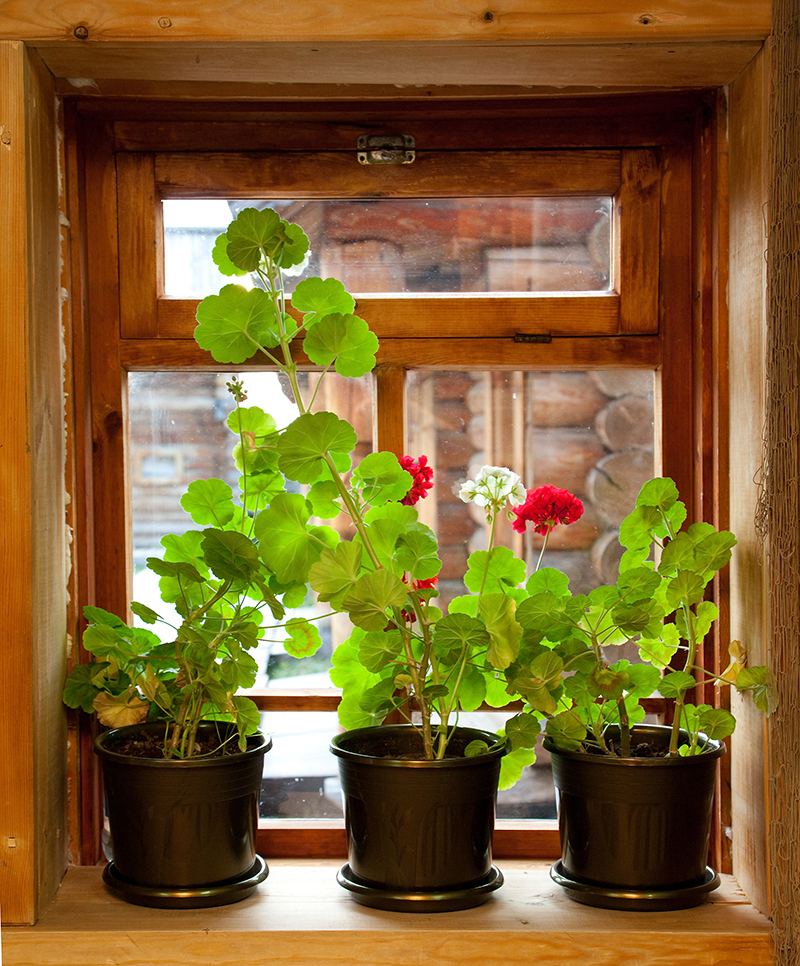Orchid Blooming: A Practical Care Approach
Posted on 25/08/2025
Orchid Blooming: A Practical Care Approach
Orchids, renowned for their exotic beauty and diverse species, stand among the most cherished ornamental houseplants worldwide. Their entrancing blooms can transform any room or garden into a vibrant paradise. However, achieving regular, robust orchid blooms often eludes many enthusiasts. This comprehensive guide delivers a practical care approach to orchid blooming, equipping you with essential tips, proven techniques, and actionable strategies for encouraging spectacular blossoms--year after year.

Understanding Orchid Blooms: Why Do Orchids Flower?
Before diving into orchid care tips, it's vital to understand why and how orchids bloom. Orchid blooming is a natural stage in the plant's life cycle, triggered by a blend of environmental cues and internal plant health. Different orchid species bloom at varying times of year, for varying durations, and with different care needs.
- Day Length: Many orchids use changes in daylight to signal blooming time.
- Temperature Fluctuations: Drop in nighttime temperatures often sparks the flowering process.
- Maturity: Only mature plants can reliably produce blooms.
- Water & Nutrition: Adequate hydration and fertilizing set the stage for consistent flowers.
Maximizing orchid blooms starts with learning the specific triggers and requirements of your orchid variety. Whether you grow Phalaenopsis, Cattleya, Dendrobium, or Oncidium, the fundamentals remain similar, though each demands slight adaptations for peak blooming performance.
Choosing the Right Orchid for Blooming Success
With over 25,000 species and hybrids, selecting the ideal orchid is a crucial step. Some types bloom more easily than others, especially for beginners. If you're new to orchid care, consider starting with:
- Phalaenopsis (Moth Orchid): Blooms last for months and care requirements are the most forgiving.
- Cattleya: Known for large, fragrant flowers, with blooms once or twice a year.
- Dendrobium: Hardy and prolific, often producing blossoms on mature canes.
Tip: Purchase an orchid already in bloom to gain insights into its healthy flower cycle and care needs!
Key Criteria for Selecting Orchids Primed for Flowering
- Visible healthy buds
- Plump, vibrant green leaves
- Robust roots with firm, silver-green color
- No signs of pests or fungal diseases
The Orchid Blooming Cycle: What to Expect
Recognizing the stages of the orchid blooming cycle helps fine-tune care at the right time:
- Vegetative Growth: New roots and leaves sprout as the orchid builds energy.
- Spike Initiation: The plant develops a flower spike, usually after a temperature or daylight cue.
- Budding: Tiny buds swell before opening into brilliant flowers.
- Full Bloom: Flowers reach peak vibrancy for several weeks or months.
- Post-bloom Rest: The plant recuperates, focusing again on leaves and roots.
Following this cycle is crucial for encouraging regular orchid blooms and preventing bloom drop or plant exhaustion.
Optimal Conditions for Orchid Flowering
While each orchid species features specific blooming triggers, general environmental conditions foster the healthiest, most reliable flowers:
1. Light: The Engine of Orchid Blooms
Orchids must receive proper light intensity to initiate and sustain flowering:
- Phalaenopsis: Prefers medium-bright, indirect sunlight. Too little light delays spikes; too much singes leaves.
- Cattleya & Dendrobium: Thrive on strong, filtered light, such as behind a sheer curtain or in sunrooms.
Test: Healthy leaves should be vibrant green, not dark or yellowish. Red-tinted leaves signal excess light.
2. Temperature & Humidity: Key Blooming Cues
- Temperature Drop: Most orchids need a 10-15?F nighttime temperature decrease to trigger spikes. For example, keep orchids at 65?F at night and 75-80?F during the day for Phalaenopsis and Cattleyas.
- Humidity Levels: Orchids prefer 40%-60% relative humidity. Dry air reduces bloom duration; use humidity trays or room humidifiers if needed.
3. Watering: Consistency Is Key
Proper hydration supports nutrient uptake and spike production:
- Water only when the potting mix begins to dry out--usually once weekly for most indoor orchids.
- Use lukewarm, filtered, or distilled water; avoid waterlogged bark or moss substrates.
- Mist roots during bloom periods, but avoid wetting the flowers to prevent fungal issues.
4. Fertilizing for Blooming Power
Feed orchids with a balanced, water-soluble fertilizer every 2 to 4 weeks:
- During vegetative growth, use a 20-20-20 orchid fertilizer.
- Switch to a blossom-boosting formula (higher phosphorus) at bloom initiation: e.g., 10-30-20.
- Flush pots monthly with clear water to avoid salt buildup.
Promoting Rebloom: Post-Bloom Orchid Care
Once flowers fade, promoting orchid rebloom requires strategic aftercare:
- Trim Spikes: For Phalaenopsis, cut the spike just above a node (small joint) to encourage side shoots and possible reblooming. For Cattleya and others, cut dead spikes at the base.
- Rest Period: Some orchids, especially Dendrobiums and Oncidiums, benefit from a drier, cooler rest after flowering to restore energy reserves.
- Resume Feeding: Fertilize lightly during rest to stimulate new leaf and root growth before the next spike emerges.
Remember: Never remove healthy leaves, as they photosynthesize and support future bud and flower development.
Common Orchid Blooming Problems and Solutions
1. My Orchid Is Not Blooming
- Insufficient Light: Move your orchid closer to a light source or supplement with grow lights.
- Lack of Temperature Fluctuation: Adjust your indoor environment to mimic natural cool nights.
- Poor Fertilization: Start a regular feeding schedule, but avoid over-fertilizing.
- Immaturity: Some orchids need 2-3 years before their first blooms; be patient!
2. Bud Blast (Buds Drop Without Blooming)
- Sudden Temperature Changes: Keep your orchid away from cold drafts or air vents.
- Low Humidity: Increase air moisture during bud development.
- Pest/Disease: Inspect buds and foliage for mites, aphids, or fungal patches.
3. Short-Lived Orchid Blooms
- Direct Sunburn: Shield flowers from harsh midday sun.
- Under-watering: Maintain consistent moisture, especially as buds open.
- Overfertilizing: Excess fertilizer can burn roots and shorten bloom lifespan.
Enhancing Orchid Blooming Indoors: Advanced Tips
Once you've grasped the basics, several advanced strategies can help maximize your orchid's blooming potential:
- Repotting: Repot every 1-2 years, ideally after flowering, using fresh orchid bark to prevent root rot and promote aeration.
- Grouping Orchids: Cluster plants together to naturally increase humidity and encourage microclimate blooming.
- Air Circulation: Place a small fan nearby to mimic the orchids' natural, breezy habitat--reducing risk of fungal disease.
- Supplemental Light: Use LED grow lights during short, dark winter days to stimulate flowering cycles.
Orchid Species and Their Unique Blooming Requirements
Phalaenopsis (Moth Orchid) Blooming
- Best for beginners, blooms can last up to 3 months.
- Requires a slight drop in nighttime temp (60-65?F) to initiate spikes.
Cattleya Orchid Blooming
- Needs bright indirect light, and cool nights around 55-60?F.
- Prone to blooming in spring and fall, often once per year.
Dendrobium Orchid Blooming
- Many require a dry, cool 'rest' in winter to flower profusely in spring.
- Feed regularly during active periods, reduce watering during rest.
Oncidium (Dancing Lady) Blooming
- Produce sprays of tiny flowers; favor ample, filtered sunlight.
- May bloom 2-3 times a year if given consistent moisture and feeding.

Frequently Asked Questions About Orchid Blooming
How long do orchids stay in bloom?
Common orchids bloom from 6 weeks to 3 months, depending on the species, care, and environment. Phalaenopsis is famed for its long-lasting blossoms.
How often will my orchid bloom?
With optimal care, most orchids bloom once or twice per year. Some hybrids may flower seasonally, or even year-round, given the right conditions.
What if my orchid never reblooms?
Check your light and temperature conditions first. A mature, healthy orchid that fails to spike is likely missing a key environmental trigger--most often a dip in nighttime temperatures or adequate sunlight.
Is it okay to cut orchid flower spikes?
Prune spent spikes to above a node to encourage side blooming in Phalaenopsis; cut other species' old spikes at the base to redirect plant energy.
Conclusion: Unlock the Secrets to Rewarding Orchid Blooms
Orchid blooming success is less about acquiring a green thumb and more about providing consistent, attentive care tailored to your orchid's unique requirements. Prioritize the right light, encourage natural temperature cues, maintain regular feeding, and never overlook the importance of post-bloom rest.
- Start with robust, healthy orchids suited for your experience level.
- Monitor environmental cues to trigger spikes and blossoming.
- Address blooming problems early for long-lasting, showstopping blooms.
By applying this practical care approach to orchid blooming, your orchids will reward your efforts with vibrant displays--reminding you that gardening is both a science and an extraordinary joy. Happy blooming!







